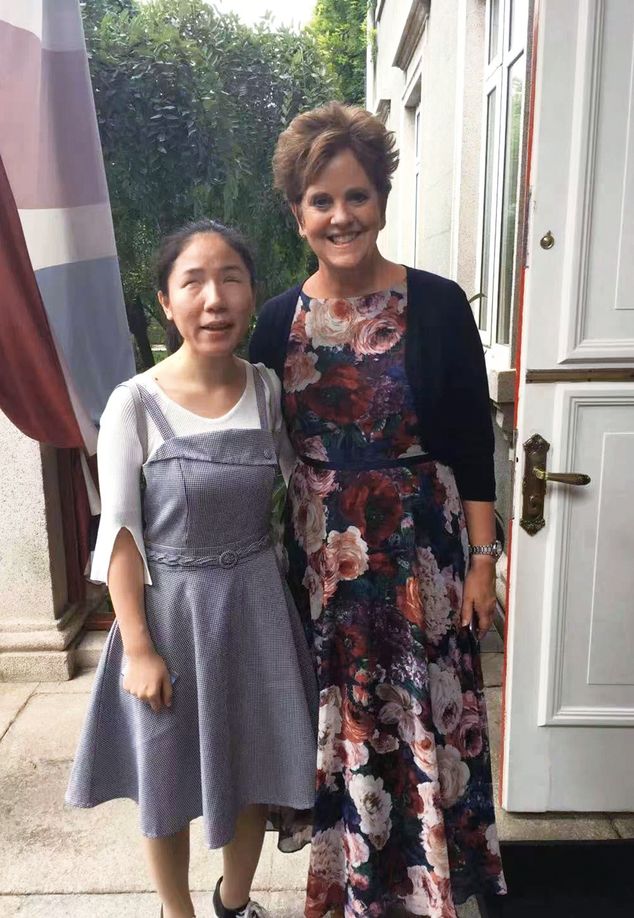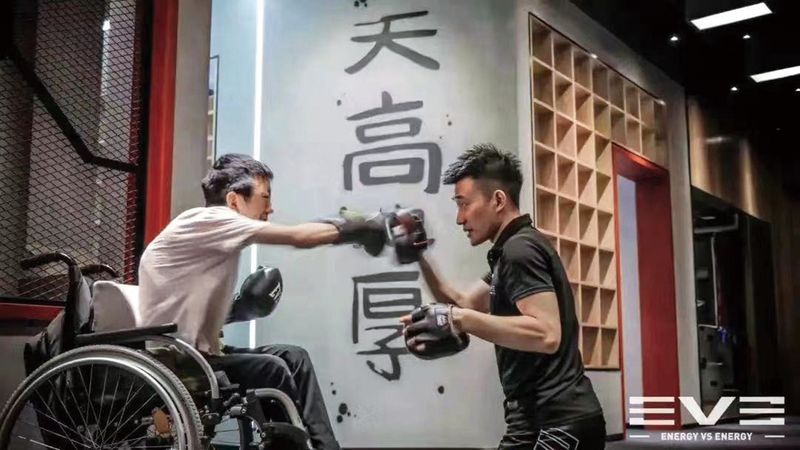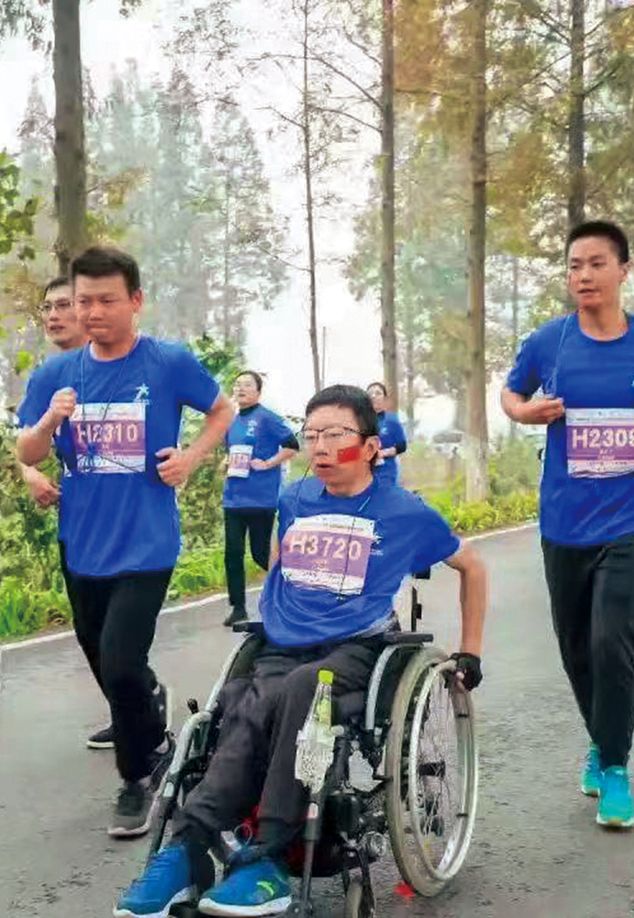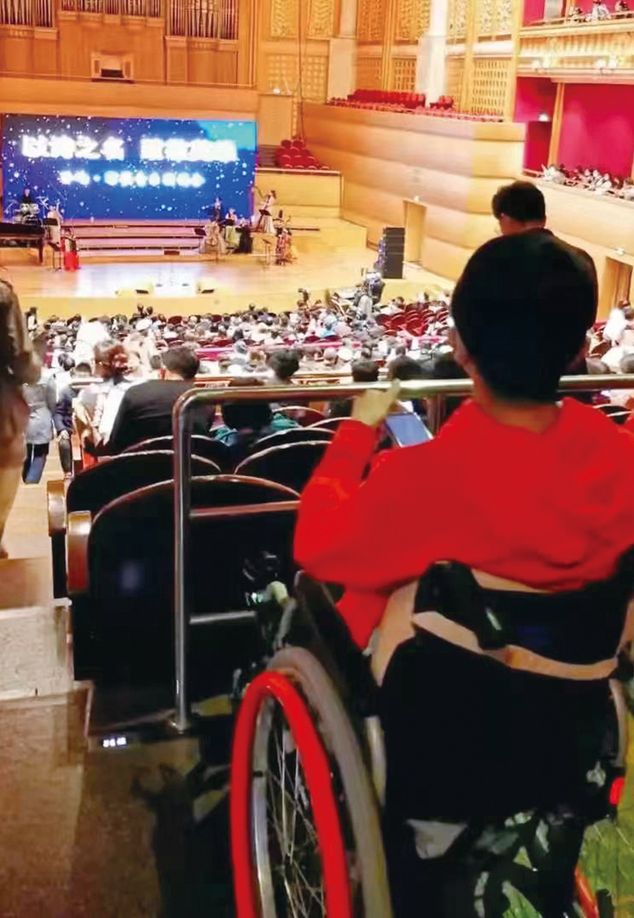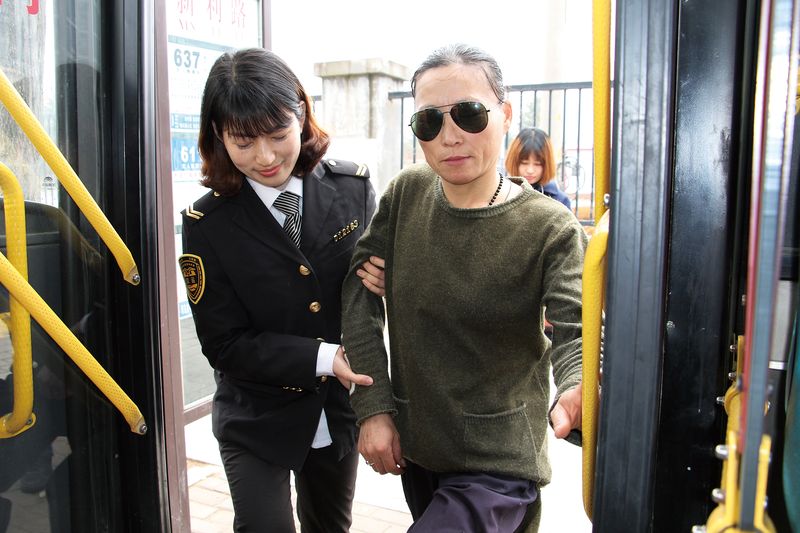Inclusion vs. reality for four disabled people in four different cities
Sissi, Beijing
I’m Sissi from Hunan province. I lived in Beijing for two years before moving to Belfast, Northern Ireland, in early October this year for a Master’s degree in Inclusive Education. I had early-onset visual impairment from the age of two, which resulted in the complete loss of my sight.
I initially moved to Beijing for the diversity and tolerance it offers. For me, the key words are autonomy and opportunity: the autonomy of mobility, of thinking, and of making choices; the opportunity to “do” things.
Having worked with Easy Inclusion, a disability inclusion consulting firm, I’m aware Beijing is leading China’s accessibility policies. In 2019, the city released a two-year action plan that called for obstacle-free urban roads and accessibility in public transport and public venues. The plan also clearly outlined division of responsibilities between government departments. But in reality, my encounters with the city’s current infrastructure have been mixed.
The facilities I used the most were tactile pavements, and buses, subways, and planes. My experience with the subway, the railway, and airports were mostly good. We can request for assistance when buying tickets, and staff will pick us up at the entrance, guide us through security and ticket checks, lead us on board, and coordinate pick-ups at our destination.
But I disliked Beijing buses. Some bus stops are not accurately marked on maps, and even when I managed to find them, there was no information on the bus number, the direction, or the time when the bus will arrive. There was always a lot of fumbling involved when taking the bus, not to mention that guide dogs are still frowned upon on buses if not completely rejected, despite policies stating they are allowed.
But bus puzzles are incomparable to challenges with tactile pavements. It’s incredible how people almost never take the pavement seriously. Instead, they see it as a parking spot for anything that suits their convenience: bikes, scooters, vendor stands, boxes, cleaning tools, and more. This carelessness upsets me so much and it undermines my sense of safety. In Belfast, pavements do not just have tactile dots for guiding walking sticks, but vibrate and make sounds, thus aiding multiple types of accessibility. This makes me feel safe to go anywhere following the instructions.
To bridge the gap between policy and implementation, changes have to come in two ways, practical and attitudinal. Infrastructure like tactile pavements, bus services, footbridges, and traffic lights—they all can be much more accessible if the disability community can be consulted in the process of designing and implementing them. This is hard because the concept of “accessibility” is underpinned by social justice and equity, which in my opinion is in conflict with the top-down governance and cultural traditions we’re familiar with in the Chinese context. Policy-makers still look at disability inclusion mostly as a charitable issue, to be solved through centralized action instead of wider societal participation, so the general public sees people with disabilities and public spending on us as a burden. Removal of these attitude barriers is the prerequisite for genuine accessibility improvement.
Yiming, Wuhan
I’m Yiming from Qianjiang, Hubei province. I have been living in Wuhan for a little over three years, doing content operations in a tech startup.
Wuhan passed its own accessibility regulations in 2010, and just last year, the municipal government organized a team consisting of volunteers, academics, university students, and residents to supervise the accessibility level of the city and promote accessibility awareness. Do you see any problem there? This working team has no people with disabilities.
As a long-term wheelchair user, I mainly use ramps and elevators for mobility. Ramps can be found pretty easily nowadays, though they are not yet everywhere. But often the ramps are illogically placed or quite steep, making them dangerous and essentially useless for many. I’m sure you’ve seen ramps with five turns leading up to a footbridge, or a ramp connected with stairs.
I consider this to be a “bug” in accessible infrastructure development. It’s a frustrating example of how so-called “inclusive” infrastructures are not built with an inclusive lens and how nothing is done for us, with us. Sometimes I would call the citizen hotline, 12345, and file a complaint if things frustrate me too much. I’ve reported troublesome ramps in subway stations, a mall, and in my
Besides ramps, I take the subway quite often. Their service is generally good except at some stations: Hanjiang Station, for example, still does not have an elevator from ground floor to the platform. Wuhan Metro staff are helpful once you’ve made it into the station, but it’s much more convenient if we can get around completely on our own. Other public facilities also need more elevators.
One last thing I think deserves attention is the lack of accessible toilets in public spaces and private residences in Wuhan. It’s a real problem when I need to look for so long for a wheelchair-friendly public toilet, or sometimes any toilet at all.
Chen Jing, Guangzhou
I came to Guangzhou from a village in Sihui, Guangdong province, when I was 9, so Guangzhou definitely feels more like home to me. I was born sightless, and I’m now a music producer and pianist. I love Guangzhou as it’s so full of life, my friends and I love the opportunities it provides.
I travel around the city regularly to give piano lessons, and my main means of transport are buses and the subway. Guangzhou buses are not totally accessible for people with visual impairments, but there are mobile apps like Chelaile that indicate the bus’s route and time of arrival. I use these apps often, but sometimes a bus stop isn’t covered by the app, then I will have to yell to ask the driver or fellow passengers. As for the subway, assistance provided by their staff is not bad. Basically, you can just tell them you need help, and they will happily give it.
Taxis also ease my mobility with accurate navigation apps. With navigation systems like the Beidou satellite GPS system, we can really feel how technology is reshaping visually impaired people’s quality of life. But I do wish more specific needs could also be considered. Take navigation apps—they don’t work as well indoors, especially on lower floors of multi-level buildings where the signal is bad. The app can tell if it’s the right road to take, but not if it’s the right direction.
Guangzhou streets are generally built with tactile pavements, but I sensed that most are one-way only—meaning that by following the pavements, I can only go in one direction on a street. It’s quite inconvenient if I want to make a detour. Overall, I think these pavements are behind the times. With their current design, their usefulness is close to non-existent.
All in all, I don’t feel there are many things I cannot do on my own with the right technologies. Admittedly, the city can do a lot more to make things more accessible, but I like to think that in trying to condition myself to the public facilities, it could be my own way of adaptation and growth.
Mywa, Chongqing
I’m Mywa, a Chongqing native who has lived in this city most of my life. Having studied English education, I’m an educator and translator. A wheelchair-user myself, I also attended a disability inclusion training program at Syracuse University in New York.
Hilly as it is, Chongqing is not as inaccessible for wheelchairs as it might look. True, its famously steep roads and long stairways raise extra difficulties for us, but electrified wheelchairs make traveling up and down easy. In fact, I find the idea that accessibility is necessarily worse in mountainous cities a myth, based on my experiences worldwide—if a road is walkable on foot, it’s supposed to be accessible by wheelchairs too; for another, cities that are less flat tend to pay more attention to accommodating various mobility needs of its inhabitants.
Chongqing is falling behind in what I call “the last steps” toward accessibility: I often travel up a ramp perfectly smoothly on an electrical wheelchair, only to find that it ends in some stairs. This happens so often that I sometimes wonder what’s preventing the designers from just replacing those one or two steps with a ramp. Is it feng shui?
Chongqing’s elevators are also inconsistent. Shopping mall elevators are good so far, but the subway ones are disappointing. There are stations with broken, locked, or missing elevators. Once I had to wait more than 15 minutes for staff to open the elevator for me. It was truly a waste of time.
Getting onto the platform is one thing; getting into the subway train is another. It is simply impossible for wheelchairs to board when there’s a height gap of 20 centimeters between the train and the platform, so I always need the help of the subway staff to carry me into the carriage. I have seen portable ramps in the subways of Beijing, Wuhan, Shanghai, and Nanjing, but they are not yet available here. And then, when we are in the train, the designated areas for wheelchairs are not always vacant. Only once has a subway driver helped me attach the safety rope.
Chongqing is said to be formulating its own accessibility regulations, but if there’s still no enforcement of policies or any changes in this nonchalant attitude, it’s just going to be another paper lying quietly on a shelf.
The High Barriers to Accessibility in China’s Cities is a story from our issue, “Access Wanted.” To read the entire issue, become a subscriber and receive the full magazine.








